We love building simple, useful apps. But without a monetization strategy, we can’t drive traffic through advertisement. Consumer apps are essentially microbusinesses - each needs its own revenue stream and business model. Here are the top mobile app business models used in consumer apps, with examples of each.
1. Freemium (Zoom)
The basic mobile app business model concept of freemium is to offer limited functionality to hook users, then charge them for expanded functionality once they’re hooked. The art is in determining when to charge people.
Zoom, for example, gives users free conferencing for 2 people, and free for 3 or more up to 40 minutes. Not ready to pay? You can ‘workaround’ their premium by ending the call and starting a new one.
The point is not to jar users with an abrupt paywall that could drive them away out of spite. Rather, minor inconveniences cleverly keep users on your platform until, eventually, they just give up and say fine, take my money.
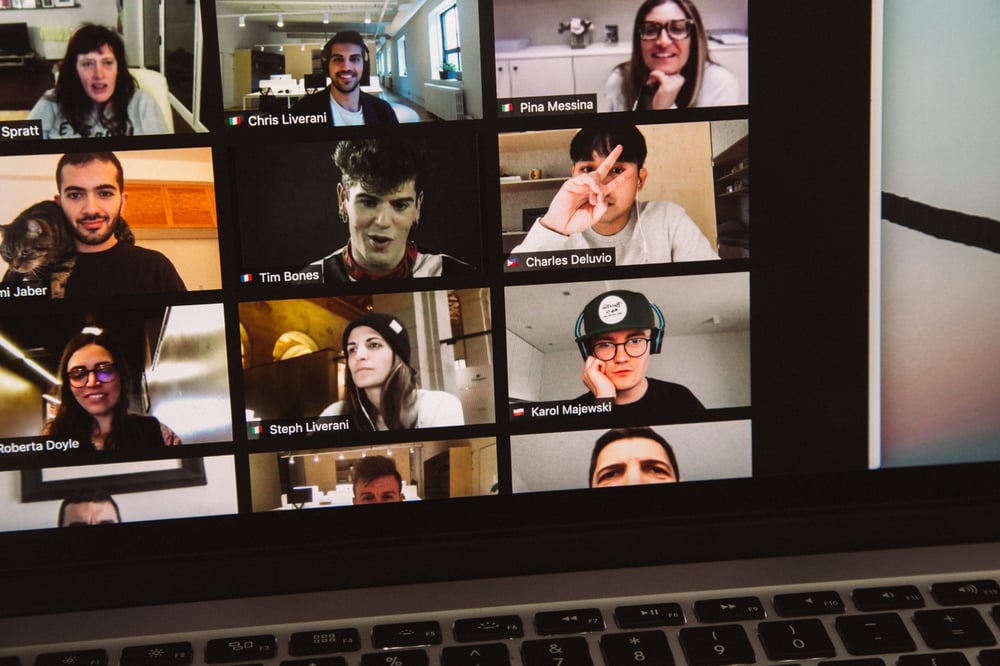
Photo via Unsplash, by Charles Deluvio
Creative twist - Duolingo
Duolingo, the popular language app is free, but you have a limited number of hearts, which you lose when you answer a question incorrectly. If you run out of hearts, you have to either wait for a heart to regenerate, or upgrade to premium to continue using the app.
It’s an educational spin on the popular gaming mobile app revenue model of in-app purchases to speed up gameplay, but here you speed up learning through more repetition and increased pressure to perform.
2. In-app purchase (Farmville)
In-app purchase is the dim sum mobile app business model of app monetization that works well when purchases help you advance an app’s utility or gameplay. Think about games - in the beginning, you just want to be decent.
As you get better and your aspirations rise, you want more powerful tools. That’s when a shop or ability to purchase add-ons makes the most sense.
Farmville did a great job supercharging in-app purchases to advance gameplay. The basic concept of the game is to plant seeds in a plot of land. Those seeds grow in (sped up) realtime, so you have to leave the app and come back later to check in on them and water them.
But you can purchase a tractor, which speeds up the time that it takes for the plants to grow. Even better - the tractor can run out of gas, which you have to buy more of to continue reaping its benefits.
Creative twist - Fortnite
Fortnite, the popular battle royale online game, sells individuality rather than quicker gameplay. While their in-app purchases don’t give you better guns or heightened abilities, you can purchase skins, backpacks, and other cosmetic add-ons that set you apart in their digital social scene.
Unsure which mobile app revenue model you should use for your app? Learn more about SF AppWorks’s AppStudio where we help you plan, design, build and test a successful app in twelve weeks.
3. Subscription (Spotify)
The subscription mobile app business models work well for customers because they lower the entry-level price and remove the hassle of repeated purchasing decisions. Think about the shift to subscription music services like Spotify. Users get the promise of all the music they could ever want, when they want it, without having to think about what to buy.
For businesses, subscription mobile app business models make it easier to predict revenue through recurring sales and create higher lifetime customer value, which allows you to budget more for advertising and marketing. It’s a predictable form of revenue generation that is well suited to a lot of business types, but in no place is it more advantageous to the business than in the case of fitness apps.
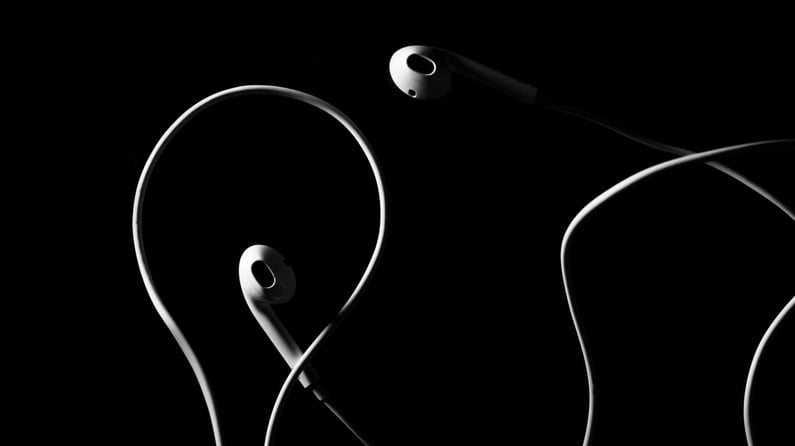
Photo via Unsplash, by Adrian Regeci
Most people struggle to stay in shape and are willing to try just about anything to move themselves towards healthier habits. Oftentimes, people believe that by paying for a gym or fitness app subscription, the commitment will motivate them to work out.
Through our research, we found that close to half of fitness app subscribers aren’t monthly active users, yet 25% stay subscribed for a year or more. What’s worse, when fitness users fail to utilize their app or gym subscriptions, they point the blame at themselves.
On the flip side, offering a freemium fitness app doesn’t make a lot of sense from the business’s point of view. Because most users would start the free trial and never use the app enough to convince them to subscribe, they won’t generate enough revenue to survive.
That’s why fitness apps always charge up front, when users are most motivated to start working out and to pay for an app that helps them do that.
*Side note: I struggled to build healthy workout habits until I learned about microhabits - tiny steps you can take every day to form a habit. If you want to run daily:
- You spend the first week putting your running shoes on every day at the same time
- Then the next week you walk down to the mailbox
- And then you jog around the block (and so on).
We took our research and poured it into the simple, yet effective micro-habit building PushApp app, available for download here.
Creative Twist - Pact
The fitness app Pact launched in 2012 with a novel, mobile app business model twist on gym subscriptions. Users could make pacts with others to get paid when they worked out or to pay a penalty when they failed to. Unfortunately, it has since been shut down for *ahem not paying its users.
Related: Ready to Hire a Mobile App Developer? Here's What to Expect
4. Ad-supported (Facebook)
The mother of all mobile app revenue models is Ad-supported, but that’s because if you can support yourself with ads, you have an extremely sticky, fast-growing, massively trafficked product. The typical trajectory for a Silicon Valley unicorn is to raise boatloads of venture capital behind a fast-growing and usually free product.
The aim is to remove any and all barriers to new user entry and focus only on the widest and farthest reach possible. Only after achieving massive scale do they turn on the money-making mechanism. That’s why Mark Zuckerberg doesn’t believe in monetizing digital products through ads until they reach 1 billion users.
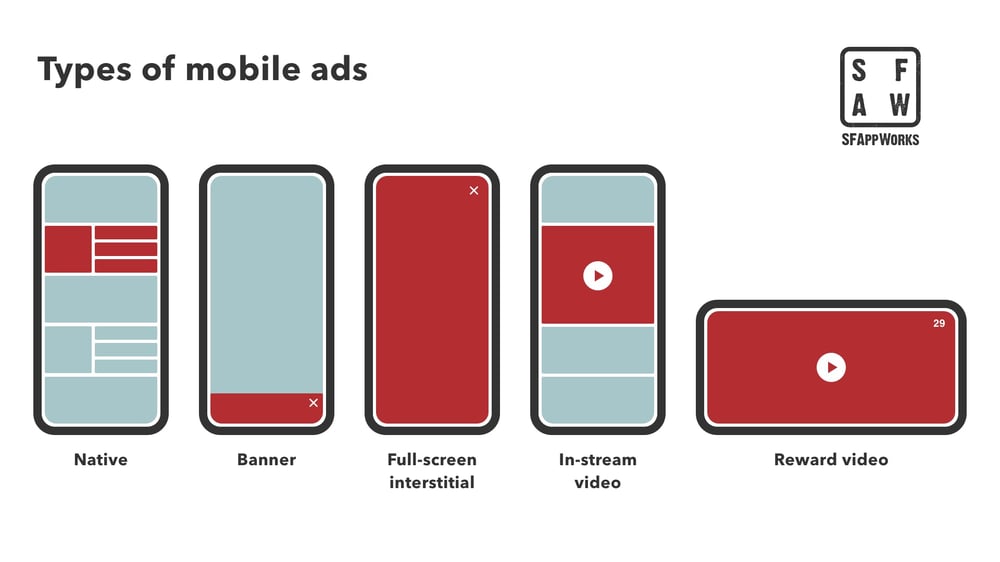
If you’re starting a new app, don’t rely on ads for a mobile app revenue model. It’s impossible to predict whether you will achieve the necessary scale. And, if you do, there will be many revenue opportunities available to you.
You might not ever need to worry about it, since you’ll probably get acquired and your product will get folded into the parent company’s ad-revenue machine (see Instagram). But for fun, here’s a rough breakdown of the economics of ads:
Ad revenue = impressions*eCPM (Effective cost per thousand impressions)
Average revenue per impression for rewarded video ads = .02, for interstitials .16, and for offerwalls 2.50. Here’s a table with various levels of traffic and the corresponding revenue.
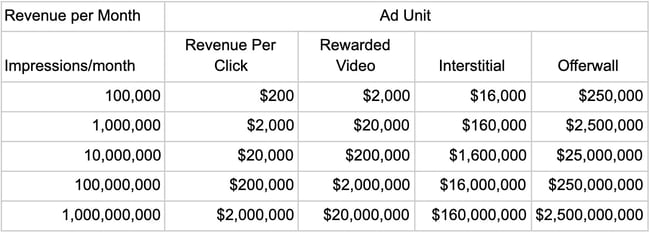
As you can see, it takes a whole lot of traffic to generate meaningful revenue. But as you can also see, when you have a whole lot of traffic, you can generate a whole lot of revenue.
Creative Twist (TikTok)
TikTok, the hyper-addictive short-form video streaming app, moves users through quick, relevant video snippets in an easy to scroll fashion. The ads mimic this content and are often designed to look like user-generated content, further blurring the lines between relevant content and relevant advertising.
5. Paid apps (SkyView)
The advantage of putting your mobile app business model behind a paywall is that you can really quickly ascertain your cost per user and lifetime user value. If you spend $5 on ads to sell a $6 app, then you keep spending. In reality, you have to also account for your operational costs, making the ratio closer to $1 to $5, but you get the point.
The problem is you only really get one chance to monetize the user, unless you are selling upgraded versions each year. This is the traditional software model, though most software now sells for a monthly subscription.
The ones who don’t tend to offer limited-use functionality, such as a simple game, an astronomy app, or a selfie editor. It’s a tacit admission that the app is probably more gimmick than utility. After all, if your app offered long-term value, why not monetize it as such?
Creative Twist - Logic
One big exception is Apple’s music editing software Logic. It’s offered at a high price point ($199), but comes with a free full-use 90-day trial that dares you to not become addicted. It’s clever because as you use the software and your data and projects grow, you become more entrenched. And if you don’t become a fan after 90-days, you weren’t the target customer anyway.
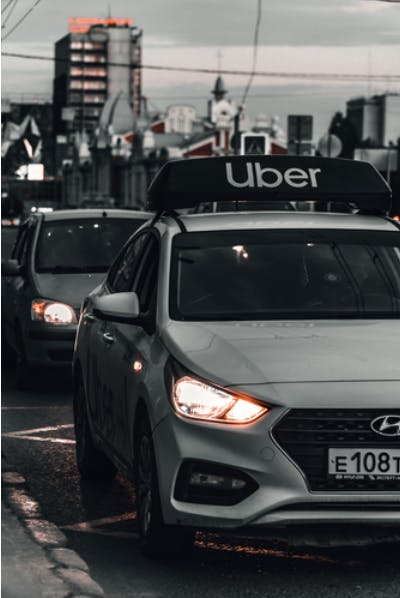
Photo via Unsplash, by Viktor Avdeev
6. Revenue Share (Uber)
If you can build a marketplace that depends on maximizing vendors/service workers and customers, you can play around with revenue sharing. Rev share is great if you have to pay out users from day one for services rendered because you only pay them when you earn revenue. Note that you still need a good sized user-base to be interesting to rev share partners.
Creative Twist - Apple
Apple takes a very high 30% cut of revenue generated from its App Store. But if you build a sticky enough app to keep users onboard for a year or more, it drops to 15%.
7. Sponsorship - Nike+
Running an agency? You might want to explore sponsorship as a mobile app revenue model. Rather than build out an app and hope for enough usage to drive meaningful revenue, you could pitch app concepts to brands and see which sticks.
They might offer you a fee to build the app, or they might license the app for a monthly recurring fee. In either case, you can sell first and build later, which turns out to be a pretty efficient way of vetting your app ideas.
Have an idea for an app but need help developing it? SF AppWorks can help you create a robust mobile app.
Creative Twist - Angry Birds
We’re all trained to tune out ads to some extent, but tuning out gameplay characters is pretty tough. That’s why Angry Birds partnered with Everton Football Club to recreate human characters for your launching pleasure. The sponsorship generated a reach of 4.8M across 100,000 impressions, along with huge international coverage and a prestigious award.
See mobile app business model missing from this list? Shoot us an email and we’ll expand on the topic, or let us know what interesting mobile app revenue models you’ve been testing.
.png?%20White%20Bake%20Sale%20Promotion%20Facebook%20Post%20(4).png&width=290&name=Simple%20Pink%20%26%20White%20Bake%20Sale%20Promotion%20Facebook%20Post%20(4).png?%20White%20Bake%20Sale%20Promotion%20Facebook%20Post%20(4).png)



COMMENTS